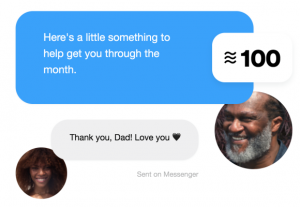Teeming off Hawaii’s famous beaches is a complex web of life—sharks, turtles, seabirds—that relies enormously on tiny larval fish, the food for many species. In their first few weeks of existence the larvae are at the mercy of currents, still too puny to get around on their own, gathering by their millions in surface “slicks” where currents meet. And it’s here where they’re increasingly meeting a pernicious, omnipresent foe and mistaking it for food: microplastic.
Researchers today published an ominous report showing that these slicks pack 126 times the concentration of microplastic as nearby surface waters, and eight times the density of plastic as the Great Pacific Garbage Patch. Microplastic particles outnumber larval fish in the slicks by a factor of seven to one, and dissections of the larvae reveal that many have plastic in their bellies. The consequences, both for these species and the food web as a whole, are downright terrifying.
“Seabirds feed on larval fish, adult fish feed on larval fish—it’s a prominent food source,” says NOAA oceanographer Jamison Gove, co-lead author on the new paper, published in the Proceedings of the National Academy of Sciences. “So that clearly has implications for how plastics can be distributed and quickly get higher up the food chain.”
Gove and his colleagues dissected hundreds of larval fish and found that 8.6 percent of specimens from slicks—which appear as smooth ribbons on the surface—contained microplastics, more than twice the rate as larvae in nearby non-slick surface waters. Less than 10 percent may not sound like much, but we’re talking about innumerable little larvae out there in the slicks, so that percentage translates into a huge population of tainted organisms.
A larval flying fish (top) and triggerfish (bottom). Their ingested plastics are zoomed in.
Courtesy of Jonathan Whitney/NOAA FisheriesThese larvae don’t yet have fully developed immune systems to deal with ingested microplastics, which is particularly worrisome when you consider that the particles are known to accumulate pathogens like bacteria as they float around the sea. “One possibility is that because larval stages are so vulnerable, eating one piece of plastic could actually potentially kill them,” says NOAA marine ecologist Jonathan Whitney, co-lead author on the paper. It’s possible that far more larvae might be eating microplastics, perishing, and sinking to the bottom of the sea than scientists know.
The larvae might be mistaking plastics for some of their more common foods—other species of plankton that float around on currents. Most of the ingested particles were transparent or blue, the same color as their prey, such as tiny crustaceans called copepods. Nearly all of the consumed microplastics were fibers, from sources like plastic fishing nets, which slough off fibers that resemble the antennae of copepods.
The researchers also found that different species of larval fish had different ingestion rates. “That’s really interesting,” Gove says, “because what I think it implies is that either different fish potentially have larger eyes or some other adaptation that they can distinguish between plastics and their prey better, or their food source is different.”
Either way, microplastics have entered Hawaii’s oceanic food chain in a big way. The researchers found that species like mahi-mahi and swordfish are readily ingesting the stuff as they’re growing as larvae. And if that affects their survival, it’s bad news for the species themselves, and the species that eat them: Predators could well be bio-accumulating microplastics in their own bodies as they dine on tainted larvae, with as-yet-unknown consequences. And keep in mind that you and I are at the end of that food chain.
“I think this paper does a great job of illustrating that plastic and plankton and larval fish interact with the ocean currents the same way,” says oceanographer Jennifer Brandon, who studies microplastics at the Scripps Institution of Oceanography and who wasn’t involved in this new work. And there’s no way to clean up that plastic without also capturing all that life, “because they’re all concentrated in the same places.”
Civilization’s addiction to plastic is out of control, and the reckoning has arrived. The question now is figuring out just how badly we’ve already corrupted the vast ocean ecosystem.
More Great WIRED Stories
- Andrew Yang is not full of shit
- How measles leaves kids exposed to other diseases
- What’s blockchain actually good for, anyway? For now, not much
- How to free up space in Gmail
- The untold story of Olympic Destroyer, the most deceptive hack in history
- 👁 Prepare for the deepfake era of video; plus, check out the latest news on AI
- 🏃🏽♀️ Want the best tools to get healthy? Check out our Gear team’s picks for the best fitness trackers, running gear (including shoes and socks), and best headphones.



